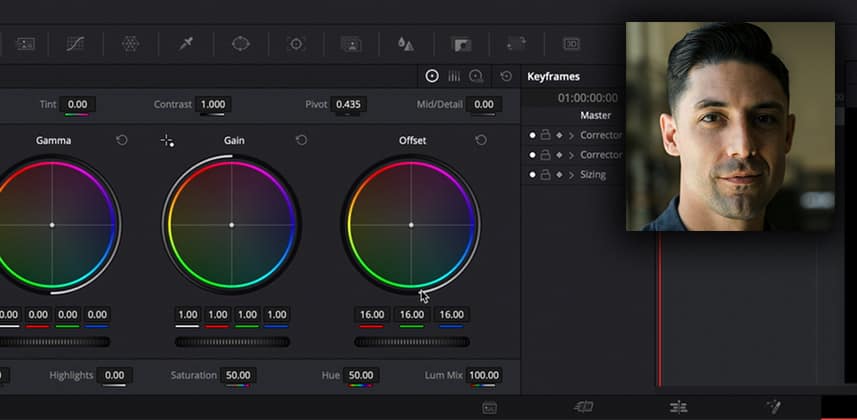| Series |
|---|
Part 1 – Learn the Offset Wheel’s hidden usefulness in color-managed workflows
I can’t lie, I LOVE working with complex tools and math tailored to my exact creative needs. But the only thing I love more is what I call “Flexing Fundamentals” – getting more out of my basic primaries than anyone else. The more of the work we can accomplish here, the more efficient, intuitive, and clean our grades become. Today we’re working with the most important fundamental of all: the Offset Wheel.
About the Offset Wheel
The Offset Wheel is the simplest possible manipulation we can make to our image, and it dates back far earlier than digital color grading to the days of photochemical color timing. Color timers knew how to flex this fundamental because they had to – it was, literally, the only tool at their disposal. So in this Insight, we’re going to explore how we can max out our use of this tool just like they did.
About this Insight
For our first installment of this new series, you’ll learn how offset can be used not only for exposure and balance, but to manipulate contrast, color separation, and saturation.
This Insight also contains a warning: Just because your client asks for a change that precisely mirrors the name of a control (such as, “lower the saturation”) doesn’t mean your first reaction should be to adjust that particular control. Think through what your client is reacting to and think about alternative controls that may more precisely solve the problem they’re seeing.
Finally, I want to reiterate here what I say at the end of this Insight. The behavior of the Offset Wheel demonstrated only happens if you’re working in a log space with a transform into your display color space (Rec.709, for example) happening AFTER the Log Wheel manipulation. In this example, that’s happening at the timeline level. But if you’ve followed Joey’s ACES node tree, these offset adjustments need to happen in the ACEScct section of the node tree (you could also work in the ‘camera space’ section if your source footage is log).
What specifically should you learn from this Insight?
- How offset affects our image mathematically as well as perceptually
- How the offset wheel can be used to effect changes in contrast
- How the offset balls can be used to effect changes in color separation and saturation
- Why it’s beneficial to push as far as you can with fundamental color controls before moving on to our more complex tools
- The danger of taking client direction a little too literally
Related Mixing Light Insights
- Printer Points: An Introduction To The Offset Control – Dan takes a look at the offset controls. The oldest and most overlooked primary controls in Resolve. Great for shot balancing.
- Client Communication: A Short Primer For Young Colorists – The hardest part about color correction is not learning new software or pushing buttons but communication with clients. Learn more in this Insight.
– Cullen
Member Content
Sorry... the rest of this content is for members only. You'll need to login or Join Now to continue (we hope you do!).
Need more information about our memberships? Click to learn more.
Membership optionsMember Login


